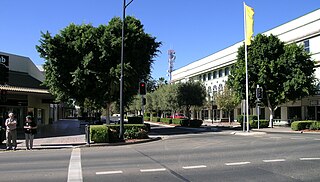
Moree is a town in Moree Plains Shire in northern New South Wales, Australia. It is located on the banks of the Mehi River, in the centre of the rich black-soil plains. The town is located at the junction of the Newell Highway and Gwydir Highway and can be reached by daily train and air services from Sydney.

Walgett is a town in northern New South Wales, Australia, and the seat of Walgett Shire. It is near the junctions of the Barwon and Namoi Rivers and the Kamilaroi and Castlereagh Highways. In 2016, Walgett had a population of 2,145.
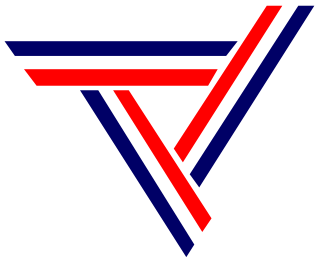
The 1982 Commonwealth Games was held in Brisbane, Australia, from 30 September to 9 October 1982. The Opening Ceremony was held at the QEII Stadium, in the Brisbane suburb of Nathan. The QEII Stadium was also the athletics and archery events venue. Other events were held at the purpose-built Sleeman Sports Complex in Chandler.

The Myall Creek massacre was the killing of at least twenty-eight unarmed Indigenous Australians by twelve colonists on 10 June 1838 at the Myall Creek near the Gwydir River, in northern New South Wales. After two trials, seven of the twelve colonists were found guilty of murder and hanged, a verdict which sparked extreme controversy within New South Wales settler society. The leader of the perpetrators, a free settler, John Henry Fleming, evaded arrest and was never tried. Four were never retried following the not guilty verdict of the first trial.
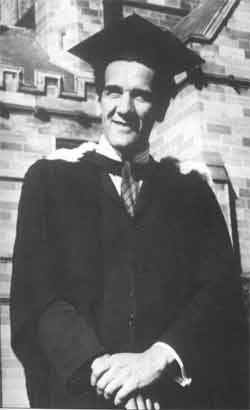
Charles Nelson Perkins, usually known as Charlie Perkins, was an Aboriginal Australian activist, soccer player and administrator. It is claimed he was the first known Indigenous Australian man to graduate tertiary education. He is known for his instigation and organisation of the 1965 Freedom Ride and his key role in advocating for a "yes" vote in the 1967 Aboriginals referendum. He had a long career as a public servant.
The Gamilaroi, also known as Gomeroi, Kamilaroi, Kamillaroi and other variations, are an Aboriginal Australian people whose lands extend from New South Wales to southern Queensland. They form one of the four largest Indigenous nations in Australia.

The bicentenary of Australia was celebrated in 1988. It marked 200 years since the arrival of the First Fleet of British convict ships at Sydney in 1788.

The Aborigines Progressive Association (APA) was an Aboriginal Australian rights organisation in New South Wales that was founded and run by William Ferguson and Jack Patten from 1937 to 1944, and was then revived from 1963 until around 1970 by Herbert Groves.
Michael Riley was an Aboriginal Australian photographer and filmmaker, and co-founder of Boomalli Aboriginal Artists Cooperative. A significant figure in contemporary Indigenous Australian art, Riley's work is held by many public art institutions, including the National Gallery of Australia.

The Aboriginal Provisional Government (APG) is an Indigenous Australian independence movement.
Carmine "Maggie" Munro was an Aboriginal Australian elder who lived in Moree, New South Wales. Munro was a community leader and confidante and was well known as a supporter of human rights for Aboriginal people, and is also known for founding "The Granniators", a group of elderly Aboriginal women who worked for their community.
In Australia, an Aboriginal land trust (ALT) is a type of non-profit organisation that holds the freehold title to an area of land on behalf of a community of Aboriginal Australians. The land has been legally granted to a community by the government under a perpetual lease, usually after the community makes a formal claim of traditional ownership. Land granted under Aboriginal title is inalienable; it can not be bought, sold, traded or given away. The land trust is the organisation appointed by the community to legally hold the title deeds. The land trusts are administered by Aboriginal land councils.
Hall Barry Greenland, is an Australian political activist. He participated in the Freedom Rides. He studied history at the University of Sydney in the 1960s and was a president of the Labor Club in 1964. As an editor of Honi Soit in 1966 he was highly critical of the war in Vietnam. During the 1970s he wrote for Rolling Stone and The Digger. He served on Leichhardt Council and is the recipient of a Walkley Award. In 2013 he was the Australian Greens candidate for Grayndler.

Jenny Munro is an Australian Wiradjuri elder and a prominent activist for the rights of Indigenous Australians. She has been at the forefront of the fight for Aboriginal housing at The Block in Sydney and started the Redfern Aboriginal Tent Embassy. She is the sister of activists Isabel Coe and Paul Coe.
The NSW Aboriginal Land Council (NSWALC) is the peak representative body of Aboriginal Australians in New South Wales. It has the mandate, under the Aboriginal Land Rights Act 1983 (NSW), to develop land rights among Aboriginal people in New South Wales through its network of 120 Local Aboriginal Land Councils (LALCs). Its functions include the creation of an economic base for Aboriginal communities, as well as the continued passing and enhancement of Aboriginal culture, identity and heritage through the management of traditional sites and other cultural materials within NSW. It acts as an advisor to governments and others to ensure the preservation of Aboriginal land rights.
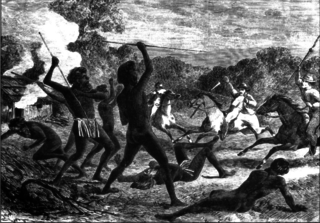
Myall Creek Massacre and Memorial Site is the heritage-listed site of and memorial for the victims of the Myall Creek massacre at Bingara Delungra Road, Myall Creek, Gwydir Shire, New South Wales, Australia. The memorial, which was unveiled in 2000, was added to the Australian National Heritage List on 7 June 2008 and the New South Wales State Heritage Register on 12 November 2010.

Moree Baths and Swimming Pool is a heritage-listed swimming pool at Anne Street, Moree, New South Wales, Australia. It was the site of one of the successful protests by Aboriginal Australians for their rights during the Freedom Ride in February 1965. The site was added to the Australian National Heritage List on 6 September 2013.
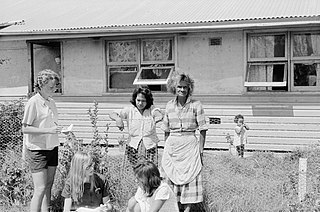
Ann Curthoys, is an Australian historian and academic.
Lyall Munro Snr, also known as Uncle Lyall Munro Senior, was an Aboriginal Australian activist, leader, and elder, especially known for his advocacy of Indigenous land rights. He was the husband of Carmine "Maggie" Munro, and father of Lyall Munro Jnr.
Lyall Thomas Munro Jnr is an Aboriginal Australian elder, a former activist and member of many organisations serving Aboriginal Australians. He is known as a local leader in the town of Moree, New South Wales. he is the son of Lyall Munro Snr, and the husband of Jenny Munro.
















